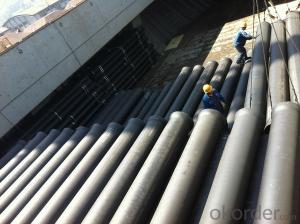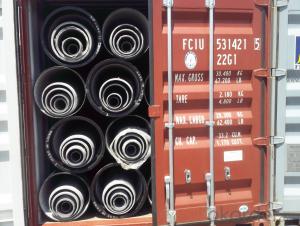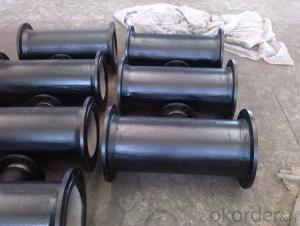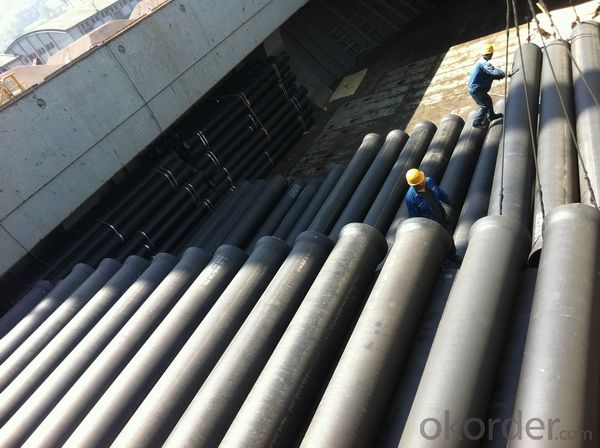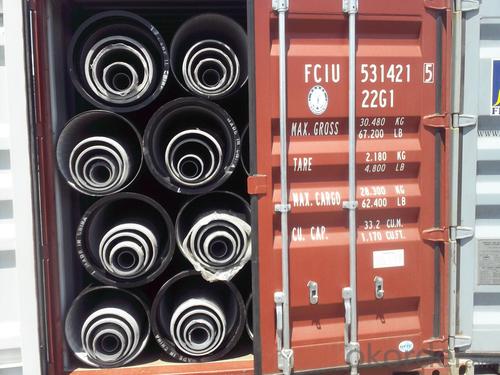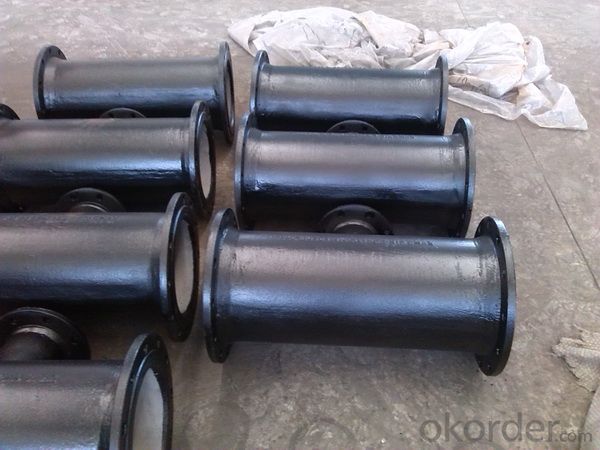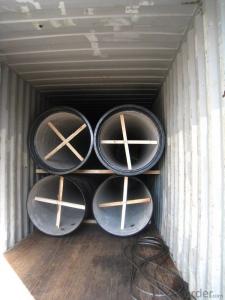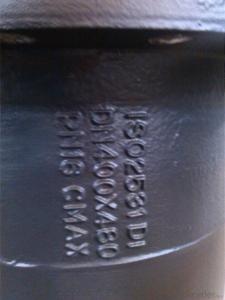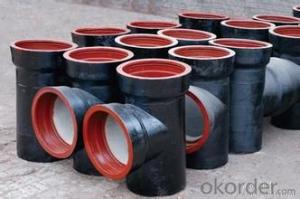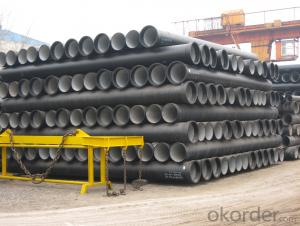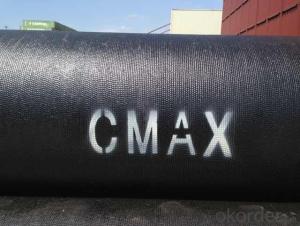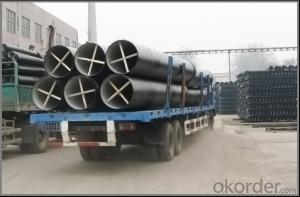DUCTILE IRON PIPE DN1000 k7
- Loading Port:
- Tianjin
- Payment Terms:
- TT OR LC
- Min Order Qty:
- -
- Supply Capability:
- 30000Tons m/month
OKorder Service Pledge
OKorder Financial Service
You Might Also Like
CNBM ductile iron pipe ranges from DN80-DN1600mm (T-Type, Class K9), effective length 6m, comply with ISO2531 Standard
Company Profile
CNBM International Corporation is the leading production base and renowned supplier of Ductile Iron Water Pipe systems of both potable and waste water in China. We are constantly looking to develop high quality products to ensure the longest service life and wonderful performance.
CNBM Pipelines regard quality as the essential factor leading to successful business. Every pipe is tested in accordance with BS EN545 (water application) or BS EN598 (sewer application). CNBM Pipelines products comply with and are tested according to the relevant European and International Standards. Our pipes are manufactured under the quality management system BS EN ISO 9001. After years of efforts, CNBM Pipelines has built up great reputation in terms of quality and service among customers worldwide
Product Introduction
CNBM ductile iron pipe ranges from DN80-DN1600mm (Tyton, T-Type, Class K7/K8/K9), effective length: 6m, complying with BS EN545/EN598/ISO2531/BS4772.
Specification& Payment terms
Internal lining: Pipes shall have an internal cement mortar lining in acc with ISO4179.
External coating: Pipes shall be externally coated with metallic zinc spray plus a further layer of resin painting to ISO8179.
Gasket: 100% SBR/NBR/EPDM gasket in accordance with ISO4633.
Packing: Pipes from DN100 to DN300 be bundled with steel belts, the others are in bulk.
Payment term: By 30% T/T advance payment + 70% Irrevocable L/C at sight.
Packing: In bulk vessel or in container.
- Q: Are ductile iron pipes suitable for use in geothermal applications?
- Yes, ductile iron pipes are suitable for use in geothermal applications. Geothermal systems involve harnessing the Earth's heat to generate energy or provide heating and cooling for buildings. Ductile iron pipes are known for their strength, durability, and corrosion resistance, all of which are vital qualities for geothermal applications. Geothermal systems often operate at high temperatures and pressures, and ductile iron pipes can withstand these conditions without compromising their structural integrity. They can handle the thermal expansion and contraction that occur in geothermal systems, ensuring a reliable and long-lasting piping solution. Furthermore, ductile iron pipes have excellent resistance to corrosion, making them well-suited for the potentially corrosive environment found in geothermal applications. This resistance ensures that the pipes will not degrade over time, maintaining the integrity of the system and minimizing the risk of leaks or failures. Additionally, ductile iron pipes have a smooth interior surface, which helps to minimize pressure loss and reduce energy consumption in geothermal systems. Their smoothness also reduces the likelihood of mineral deposits or scaling buildup, ensuring efficient and uninterrupted heat transfer. Overall, ductile iron pipes are a suitable choice for geothermal applications due to their strength, durability, corrosion resistance, thermal stability, and smooth interior surface. They provide a reliable and efficient piping solution that can withstand the demanding conditions of geothermal systems while ensuring long-term performance and minimal maintenance requirements.
- Q: How is ductile iron pipe installed?
- Ductile iron pipe is typically installed using a process called trenchless technology or open-cut method. In the trenchless technology approach, a hole is drilled into the ground and the ductile iron pipe is then pushed or pulled into the hole using hydraulic jacks or winches. This method minimizes disruptions to the surrounding environment and reduces the need for extensive excavation. In the open-cut method, a trench is excavated to the required depth and width for the ductile iron pipe. The trench is then prepared by removing any debris or obstructions and ensuring a stable base. The pipe is then lowered into the trench and aligned properly using laser or surveying equipment. After the pipe is positioned, joints are connected using a rubber gasket or mechanical joint. The joints are typically sealed to prevent leakage. Backfill material is then carefully placed around the pipe, ensuring proper compaction to provide stability and support. The backfill is typically done in layers to avoid excessive settlement. Once the installation is complete, the pipe is tested for leaks and pressure to ensure its integrity. This may involve hydrostatic testing, where the pipe is filled with water and monitored for any signs of leakage or pressure loss. Overall, the installation of ductile iron pipe requires careful planning, excavation, alignment, joint connection, backfilling, and testing. It is essential to follow industry standards and guidelines to ensure a successful and reliable installation that meets the required specifications.
- Q: Can ductile iron pipes be used for irrigation systems?
- Certainly, irrigation systems can utilize ductile iron pipes. These pipes possess exceptional strength and durability, rendering them appropriate for a wide range of uses, including irrigation. They exhibit resistance to corrosion and boast a lengthy lifespan, guaranteeing their ability to endure the challenging conditions frequently associated with irrigation systems. Moreover, ductile iron pipes possess a sleek inner surface, facilitating efficient water flow and minimizing friction loss. This renders them highly suitable for the transportation of water over extensive distances, thereby ensuring the thorough irrigation of crops or landscapes. In summary, ductile iron pipes represent a dependable and economically viable option for irrigation systems.
- Q: What is the expected pressure rating of ductile iron pipes?
- The pressure rating of ductile iron pipes can vary depending on factors like pipe diameter, wall thickness, and installation joint type. However, ductile iron pipes are generally recognized for their durability and ability to handle high pressure. In most instances, ductile iron pipes are designed and produced to meet or surpass industry standards like AWWA C151 or C115/A21.15. These standards establish the minimum pressure rating for ductile iron pipes, which typically range from 150 to 350 psi for water transmission purposes. It's important to note that the pressure rating is also influenced by the pipe's class, which corresponds to the wall thickness. Ductile iron pipes are commonly available in different classes such as Class 50, Class 51, Class 52, etc. Each class has its own pressure rating, with higher classes offering greater strength and pressure resistance. To determine the exact pressure rating, it is advisable to refer to the manufacturer's specifications and guidelines for the specific ductile iron pipes being used. Additionally, other factors like pipe support, installation methods, and operating conditions should be considered to ensure the safe and efficient functioning of the ductile iron pipe system.
- Q: What is the expected corrosion protection system for ductile iron pipes?
- The expected corrosion protection system for ductile iron pipes typically involves a combination of external coatings, internal linings, and cathodic protection. External coatings are applied to the exterior surface of the pipe to provide a barrier against corrosion. These coatings are typically made of fusion-bonded epoxy, polyethylene, or polyurethane. They protect the pipe from the surrounding environment, including soil, water, and chemicals, and help to extend the lifespan of the pipe. Internal linings are applied to the interior surface of the pipe to protect against corrosion from the transported fluid. These linings can be made of cement mortar, epoxy, or polyurethane. They provide a smooth and protective layer, preventing the formation of rust and scale on the pipe's inner surface. Cathodic protection is an electrochemical technique used to protect ductile iron pipes from corrosion. It involves the use of sacrificial anodes or impressed current systems to create a protective electrical current that counteracts the corrosion process. This method helps to prevent the formation of rust and extends the life of the pipe. It is important to note that the specific corrosion protection system for ductile iron pipes may vary depending on the application and environmental factors. Consulting with corrosion experts and adhering to industry standards and guidelines is crucial in determining the appropriate corrosion protection system for a particular ductile iron pipe installation.
- Q: Can ductile iron pipes be made of flexible waterproof sleeves?
- Usually, a bushing is used to make a pool. It is the conduit to the sink. However, the common casing is difficult to seal so that there is water leakage between the casing and the pipe and water leakage between the casing and the wall. Only the waterproof sleeve can solve the water leakage between the casing and the wall, but it can not solve the seal between the casing and the pipe, and the flexible waterproof bushing can solve two problems.
- Q: Can ductile iron pipes be used for water treatment plants?
- Yes, ductile iron pipes can be used for water treatment plants. Ductile iron pipes have excellent corrosion resistance and durability, making them suitable for transporting water in water treatment plants. Additionally, their high tensile strength allows them to withstand the high pressures often found in these facilities.
- Q: Can ductile iron pipes be used for cooling water systems?
- Yes, ductile iron pipes can be used for cooling water systems. Ductile iron pipes are known for their durability, strength, and corrosion resistance, making them suitable for a wide range of applications, including cooling water systems. These pipes have the capacity to handle high pressure and temperature fluctuations, making them ideal for circulating and transporting cooling water. Additionally, ductile iron pipes have a smooth internal surface that reduces friction and minimizes the risk of scaling or clogging, ensuring efficient flow of the cooling water. Therefore, ductile iron pipes can be a reliable and efficient choice for cooling water systems.
- Q: What pipe can be used to replace the cast iron pipe in the water supply? Thank you
- You are mistaken in concept. The cast iron pipe is the sort of connection method. The ductile iron pipe is classified according to the material.
- Q: What are the typical joint restraint systems used in ductile iron pipes?
- The typical joint restraint systems used in ductile iron pipes include mechanical joint restraints, push-on joint restraints, and restrained joint systems. 1. Mechanical Joint Restraints: These systems use mechanical devices to secure the pipe joints. The most common type of mechanical joint restraint is the gland-type restraint, which consists of a gland and a follower. The gland is placed over the pipe joint and tightened using bolts, creating a tight seal and preventing movement. 2. Push-On Joint Restraints: Push-on joint restraints utilize a rubber gasket to create a watertight seal between the pipe sections. These restraints do not require any additional devices or bolts to secure the joint. The gasket creates enough friction and compression to prevent the pipe from separating. 3. Restrained Joint Systems: Restrained joint systems provide a high level of joint integrity and resistance to longitudinal movement. These systems typically use a combination of mechanical joint restraints and push-on joint restraints. They may also incorporate additional elements such as harnesses, rods, or wedges to provide extra support and prevent joint separation. It is important to note that the specific joint restraint system used in ductile iron pipes may vary depending on the application, pipe diameter, and operating conditions. The selection of the appropriate joint restraint system is crucial to ensure the structural integrity and longevity of the pipeline.
Send your message to us
DUCTILE IRON PIPE DN1000 k7
- Loading Port:
- Tianjin
- Payment Terms:
- TT OR LC
- Min Order Qty:
- -
- Supply Capability:
- 30000Tons m/month
OKorder Service Pledge
OKorder Financial Service
Similar products
Hot products
Hot Searches
Related keywords
